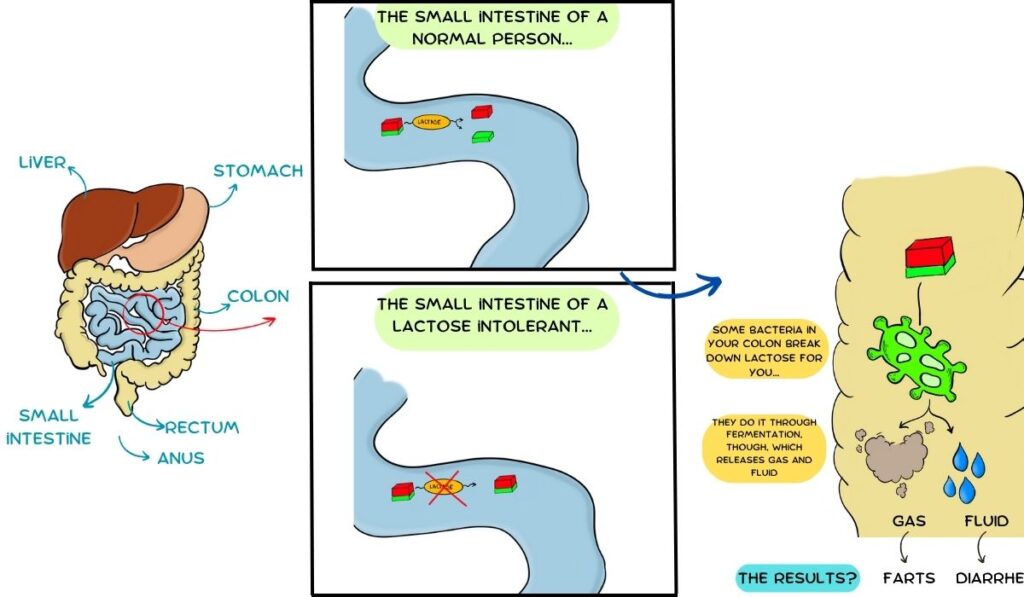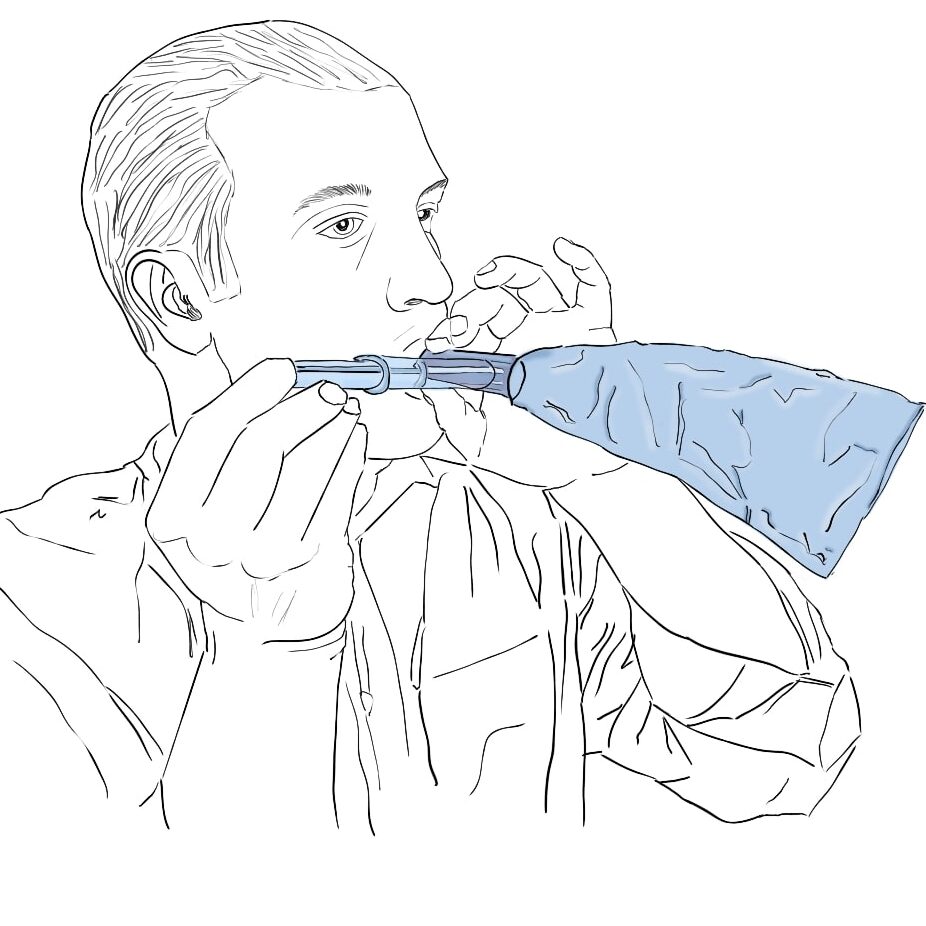Do you find it difficult to digest certain foods? You might be lactose intolerant; in fact, a large part of the population is. In some countries, 70% of the population suffers some degree of lactose intolerance.
What is lactose intolerance?
Lactose intolerance is a disorder where you can’t digest lactose easily. To absorb lactose, first, we need to break it down into smaller bricks. But lactose-intolerant people can’t carry out that step.
This causes patients to experience symptoms such as abdominal pain, diarrhea, and bloating.
Why does it happen?
Lactose is a sugar found in milk and other dairy products like cheese and yogurt.
It is a complex sugar made up of 2 smaller, simple sugars.
To digest lactose, first, we must break it down into those small bricks. Then, we’ll be able to absorb each piece separately. But lactose intolerants can’t break down lactose.
Because those with intolerance can’t absorb lactose, it keeps traveling through their guts until it reaches their colon.
Once it reaches their colon, bacteria start breaking down lactose. However, they do it through fermentation, a process that releases a lot of gas and fluid.
This gas and fluid explain all the symptoms of lactose intolerance.

What are the symptoms of lactose intolerance?
The most common symptoms are:
· Bloating and gas
· Pain and cramps
· Diarrhea with smelling stools
· Nausea and vomiting
· Stomach growling
These symptoms start around 30 minutes to 2 hours after eating diary
It will start with bloating and gases.
Diarrhea is very common, too, because of all the fluid produced during fermentation.
Abdominal pain happens in almost all cases because of the irritation and swelling.
Finally, some people get nausea and vomiting.
So much fluid and gas moving around causes growling or rumbling sounds, which are much louder in individuals with lactose intolerance.
Sometimes, small children will have different symptoms. They will be crying and irritated but now complain about their belly.
So, how do you get a diagnosis?
The simplest way is through an elimination diet. You stop consuming dairy products and see.
If you are lactose intolerant, your symptoms will go away.
Sometimes, your doctor can suggest a trigger test to be sure. You start retaking dairy products: Do symptoms come back? If they do, you’re likely lactose intolerant.
There are some additional tests in case your doctor wants to be sure.
· Hydrogen Breath Test
This test detects hydrogen in your breath, which is one of the products of lactose fermentation.
If you are breathing out a lot of hydrogen, that’s a positive test for lactose intolerance.
· Before they measure your levels, they will give you a lactose drink.
· Then, they will check your breath using a device similar to a breathalyzer.

· Blood Test
We can use a blood test to diagnose lactose intolerance. Usually, your glucose blood levels should go up after consuming dairy (lactose digestion gives glucose).
If your glucose blood levels don’t go up, it means you are lactose intolerant.
· Stool Acidity Test
Patients with lactose intolerance have acid stools as a result of fermentation.
This test is sometimes used with small children because they have trouble complying with the breathing tests.
How to treat it
The most effective way to treat lactose intolerance is to eliminate dairy.
Make sure you stop taking milk, yogurt, cheese, ice cream…
Fortunately, there are many lactose-free products in every supermarket, so you can still enjoy any food you crave (almond milk, soy milk…).
Lactase supplements are small pills that are available over the counter. You have to take them right before consuming dairy so that it will break down the lactose for you.
Sources
https://www.rcpa.edu.au/Manuals/RCPA-Manual/Pathology-Tests/L/Lactose-tolerance-test
https://journals.sagepub.com/doi/pdf/10.3184/003685009X12547510332240#:~:text=A%20person%20labelled%20as%20lactose,intestine%20into%20gases%20and%20toxins.
Leave a Reply